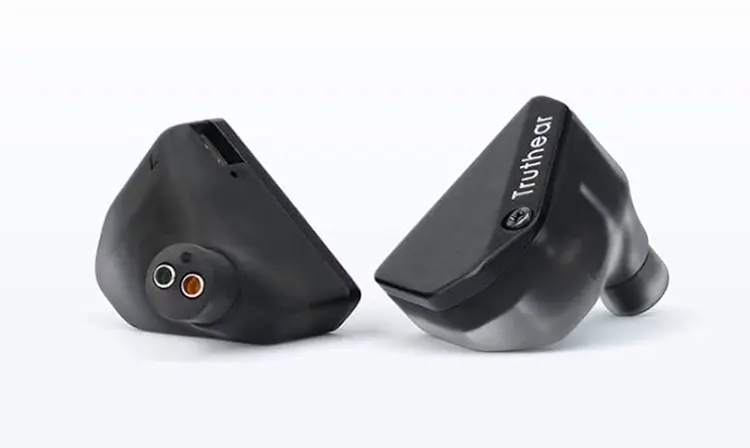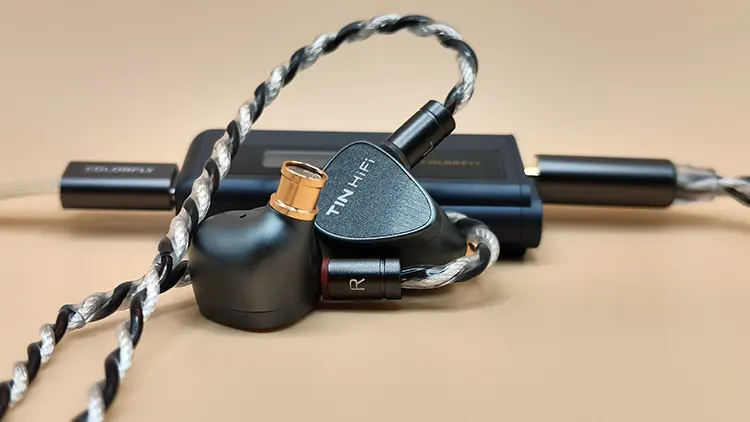Synergy
The TinHiFi T5S’s impedance rating of 32Ω and a sensitivity of 103 dB/mW will make it compatible with most modern sources such as dongles and DAPs.
You will not need to worry about requiring a high-end source or anything other than your regular portable device with a 3.5mm jack.
The TinHiFi T5S wasn’t picky at all with my testing. I’ve used a phone with a 3.5mm, the Colorfly CDA-M2, and the FiiO KA11 for testing.
With a smartphone equipped with a 3.5mm SE output, I needed around 90% volume before I could enjoy it so it’s doable but a dongle will give you a bit more headroom. Again, I listen to around 70 to 75 dB so your experience will vary.
With the Colorfly CDA-M2, the volume of the CDA-M2 is at 40% volume while the laptop I was using was at 100% volume, and the sound quality was the same with a phone.
Lastly, trying the FiiO KA11, this dongle powered it well but the device was on 80% for volume. Aside from that, the sound quality was the same as the others.
Any device should be able to power the TinHiFi T5S without a big issue. Sound quality differences of each DAC and DAP should be considered last.
Select Comparisons
Truthear Hexa
Technical
The Truthear Hexa comes with a single dynamic driver and triple BA setup. It has an impedance of 20.5Ω with a sensitivity of 120 dB/Vrms.
The Truthear Hexa is slightly more efficient to drive than the TinHiFi T5S but not too much. Both of these have no issues being driven by moderate source power.
However, the 120 dB/Vrms rating of the Truthear Hexa makes it a bit more sensitive than the TinHiFi T5S for gain.

Design
The Truthear Hexa has a black unibody design, however, both the shells and faceplates are only available in black.
The TinHiFi T5S and the Truthear Hexa have a uniform color design. The former has a gunmetal color while the latter is all black. There’s also a screw on the shell of the Truthear Hexa whereas the TinHiFi T5S doesn’t use any screws as part of its build.
Performance
The TinHiFi T5S completely slams the Truthear Hexa’s bass performance. It’s not even a competition with this aspect. The Truthear Hexa is genuinely dry compared to the TinHiFi T5S. I couldn’t get any bass enjoyment out of it.
For its mids, the warmth of the TinHiFi T5S is smoother and more appealing. It doesn’t cheap out on the weight note for the male vocals either. Even female vocal timbre is better on the TinHiFi T5S with improved tonal accuracy.
The one thing the Truthear Hexa undeniably does better is the treble. I assume the 4 additional balanced armatures help with it. The Truthear Hexa doesn’t have sibilance issues. There are no high-frequency issues that affect that mids like the TinHiFi T5S.
The detail retrieval is a level or two higher than the TinHiFi T5S. It’s a very detailed IEM that competes above its price range in this regard. You also get a wider soundstage and better dynamics.
Overall, the Truthear Hexa sounds analytical but not as enjoyable. Meanwhile, the TinHiFi T5S is a lot more musical and fun but its treble needs more work.
MOONDROP Aria 2
Technical
The MOONDROP Aria 2 is a single dynamic driver IEM and a recent successor to the famed first-generation MOONDROP Aria.
The dynamic driver it has is from a previous flagship product they have. They didn’t specify which one but the driver uses internal and external magnetic circuits with an independent brass cavity.
It has a 33Ω impedance and a 122 dB/mW sensitivity. It will be easy to run on most devices.
Design
Like the TinHiFi T5S, the Aria 2 is an all-metal build so temperature concerns are here. The MOONDROP Aria 2’s CNC milled shell with a cast zinc alloy material can get a bit frosty in the ear on a chilly day.
It’s an all-white or all-silver color design. I would describe the overall aesthetic as being subdued but stylish with its dotted design. However, the ‘golden screw’ on the faceplate gives the overall visual a nice focused accent.
The Aria 2 has a lot of vents on the shell near the nozzle with those nozzles being replaceable while the TinHiFi T5S nozzle is fixed and the filters inside are replaceable.
Performance
The most immediate difference between these two IEMs is the bass response.
The TinHiFi T5S has a stronger sub-bass presence, one you can feel across your ears. The MOONDROP Aria 2 has a better sense of slam and punch from an elevated mid-bass response.
Also, the MOONDROP Aria 2 mids sound a bit brighter and near shouty. It’s similar to the sibilance issue of the TinHiFi T5S, the shoutiness is present throughout. Fortunately, the mids aren’t thin-sounding like the TinHiFi T5S.
The treble is much better done on the MOONDROP Aria 2. For starters, there is very little sibilance with it. The detail retrieval, soundstage, and dynamics are better on the MOONDROP Aria 2.
Our Verdict
The TinHiFi T5S is a competitive entry-level single dynamic driver universal IEM with a musical or ‘fun’ tuning that most of its nearest competitors seem to have strayed from.
Instead of a common analytical sound signature, this is a tuning with a stronger focus on strong bass and euphonic warmth.
Despite some sibilance concerns, this is the IEM I would use for a chillout listening session. Having elevated bass and more warmth is a nice personal choice for music enjoyment.
TinHiFi T5S Technical Specifications
- Driver Type: One (1x) dynamic driver
- Plug: 3.5mm single-ended standard 0.78mm-2pin
- Frequency Response: 10Hz – 40kHz
- Impedance: 32@1kHz
- Sensitivity: 103db/Vrms




